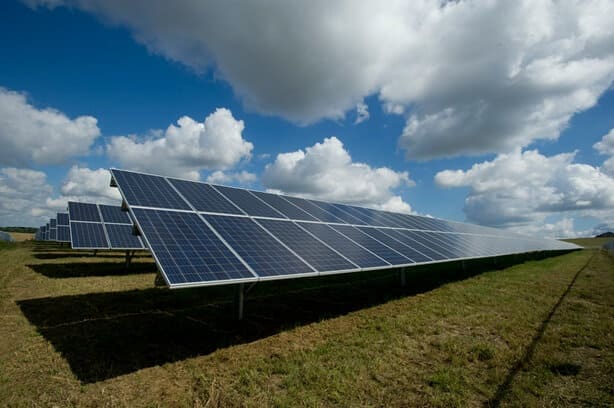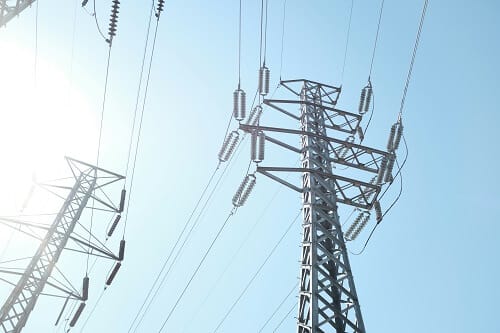
As the climate crisis intensifies and countries race toward net-zero emissions, renewable energy is at the forefront of global efforts to reduce carbon footprints. The year 2024 promises significant advancements in clean energy, with new technologies, policies, and innovations driving growth in this sector. But what are the top trends in renewable energy for 2024, and how will they shape the future of energy production and consumption? In this blog, we’ll dive into the biggest renewable energy trends that are set to transform the world, making it greener and more sustainable.
1. Accelerating Growth of Solar Power

Solar power remains one of the most important renewable energy sources, and its growth is only expected to accelerate in 2024. The cost of solar photovoltaic (PV) panels continues to decline, making it more affordable for both residential and commercial use. According to the International Energy Agency (IEA), solar power is projected to account for nearly 60% of global renewable energy capacity additions in the coming years.
One key trend in solar power is the expansion of floating solar farms, which are particularly useful in countries with limited land space. Additionally, innovations like solar skins (aesthetic solar panel designs that blend into rooftops) are gaining popularity, making it easier for homeowners to install solar panels without compromising their home’s appearance.
- Bifacial Solar Panels: These panels, which capture sunlight on both sides, are becoming more prevalent. According to a report by the International Energy Agency (IEA), bifacial panels can increase energy production by up to 30% compared to traditional panels.
- Perovskite Solar Cells: Emerging as a game-changer, perovskite solar cells are noted for their high efficiency and low production costs. Recent studies indicate that these cells have achieved efficiencies exceeding 25%, with potential to surpass traditional silicon-based cells in the near future.
- Floating Solar Farms: Floating solar installations are gaining traction, especially in regions with limited land availability. A recent survey by Bloomberg New Energy Finance highlights that floating solar capacity grew by 50% in the past year, and this trend is expected to continue as technology matures.
Q: Is solar power really that affordable?
Yes, solar power is becoming increasingly affordable. The cost of solar panels has dropped by over 80% since 2010, making it one of the most cost-effective ways to generate electricity.
2. The Rise of Green Hydrogen
Green hydrogen is emerging as a game-changer in the renewable energy sector. This clean fuel, produced by using renewable energy to split water into hydrogen and oxygen, has the potential to decarbonize industries that have traditionally been difficult to electrify, such as steel production, aviation, and shipping.

Governments around the world are investing heavily in green hydrogen projects. The European Union, for example, has committed over €300 billion to green hydrogen initiatives through its “Green Deal.” As we move into 2024, green hydrogen is set to become a cornerstone of the global energy transition.
- Electrolysis Advancements: Recent advancements in electrolyzer technology are making green hydrogen production more efficient and cost-effective. The Hydrogen Council reports that the cost of green hydrogen could fall by up to 60% by 2030, driven by improvements in electrolyzer technology and economies of scale.
- Sector Coupling: Green hydrogen is being integrated into various sectors, including transportation and industry. Major automakers are investing in hydrogen fuel cell technology for heavy-duty vehicles, and industries like steelmaking are exploring hydrogen as a cleaner alternative to traditional processes.
- Government Initiatives: Governments worldwide are supporting green hydrogen initiatives. The European Union’s Hydrogen Strategy aims to produce 10 million tons of green hydrogen annually by 2030, and similar initiatives are being adopted in countries like Japan, South Korea, and the United States.
Q: What industries can benefit the most from green hydrogen?
Green hydrogen is particularly beneficial for industries like steel manufacturing, heavy transportation, and chemicals, where electrification is not always feasible.
3. Energy Storage Breakthroughs

One of the biggest challenges in renewable energy is its intermittent nature—solar panels don’t generate electricity at night, and wind turbines don’t produce energy when the wind isn’t blowing. That’s why energy storage solutions are becoming increasingly critical.
In 2024, we’ll see continued breakthroughs in battery technology, with a focus on longer-lasting, more efficient batteries for grid storage. Solid-state batteries are one of the most anticipated advancements, promising greater energy density and faster charging times compared to traditional lithium-ion batteries.
- Battery Innovations: Lithium-ion batteries remain the leading technology, but new developments are emerging. Solid-state batteries, which offer higher energy density and improved safety, are making significant strides. Research from the Department of Energy indicates that solid-state batteries could revolutionize energy storage within the next decade.
- Grid-Scale Storage: Large-scale storage solutions are becoming more common. The deployment of pumped hydro storage and large-scale lithium-ion systems is increasing, providing stability to grids that rely heavily on intermittent renewable sources. The Energy Storage Association reports that global energy storage capacity is expected to exceed 1,000 GWh by 2025.
- Hybrid Systems: Combining different storage technologies, such as batteries with hydrogen storage, is becoming a trend. These hybrid systems can balance energy supply and demand more effectively, offering a solution to the intermittency of renewable sources.
Q: Why is energy storage so important?
Energy storage ensures a reliable and consistent supply of electricity, even when renewable energy sources aren’t actively generating power. It’s crucial for stabilizing the grid and preventing blackouts.
4. Offshore Wind Power Expansion
Offshore wind power is experiencing a global boom, with countries like the United States, China, and the United Kingdom leading the charge. Offshore wind farms have the potential to generate vast amounts of electricity, and with the development of floating wind turbines, offshore wind can be deployed in deeper waters where winds are stronger and more consistent.
By 2024, offshore wind capacity is expected to grow by 40%, making it a key player in the renewable energy mix. This growth is supported by significant investments from both governments and private companies, as well as advancements in turbine technology that allow for larger, more efficient turbines.
- Floating Wind Turbines: The development of floating wind turbines has expanded the potential for offshore wind energy beyond shallow waters. According to a report by the Global Wind Energy Council, floating wind installations are projected to reach 20 GW by 2030, significantly increasing the viability of offshore wind projects.
- Cost Reductions: The cost of offshore wind energy has decreased dramatically. Recent data from the International Renewable Energy Agency (IRENA) shows that the cost of offshore wind power has fallen by 70% over the past decade, making it increasingly competitive with fossil fuels.
- International Collaboration: Countries are increasingly collaborating on offshore wind projects. The North Sea Wind Power Hub, a collaborative project involving multiple European nations, aims to create a large-scale offshore wind network that could supply power to up to 80 million homes by 2030.
Q: How does offshore wind power compare to onshore wind?
Offshore wind farms can generate more electricity due to stronger and more consistent winds over the ocean. They also avoid the land use conflicts often associated with onshore wind farms.
5. Smart Grids and Decentralized Energy Systems

The transition to renewable energy requires more than just new energy sources—it also demands smarter, more flexible energy systems. In 2024, we’ll see the continued rise of smart grids, which use digital technology to manage energy production and consumption more efficiently.
In addition to smart grids, decentralized energy systems—where homes and businesses generate their own energy through solar panels, wind turbines, or other renewables—are becoming more common. These systems not only reduce reliance on traditional power grids but also enable energy consumers to become energy producers, contributing to a more resilient and sustainable energy future.
- Microgrids: Microgrids, which can operate independently from the main grid, are being deployed in various regions. These systems enhance energy security and resilience, particularly in remote or disaster-prone areas. A recent study by the U.S. Department of Energy found that microgrids can improve grid reliability and reduce energy costs for communities.
- Smart Grids: The integration of smart grid technology is facilitating more efficient and flexible energy distribution. Smart grids use advanced sensors and communication technologies to optimize energy use and incorporate renewable sources. The Smart Electric Power Alliance estimates that smart grid investments could save the U.S. economy $2.2 trillion by 2030.
- Peer-to-Peer Energy Trading: Platforms for peer-to-peer energy trading are emerging, allowing individuals to buy and sell excess energy within their communities. This trend promotes local energy markets and can enhance the economic viability of small-scale renewable projects.
Q: What are the benefits of decentralized energy systems?
Decentralized energy systems provide greater energy security, reduce transmission losses, and give consumers more control over their energy usage.
6. Corporate Commitment to 100% Renewable Energy
In 2024, more corporations are committing to powering their operations with 100% renewable energy. This trend is being driven by consumer demand for sustainable products, investor pressure, and government regulations. Major companies like Apple, Google, and Amazon have already achieved or are on track to reach 100% renewable energy targets.
These corporate commitments are not only reducing carbon emissions but also driving innovation and investment in renewable energy technologies. As more companies join the movement, the shift toward a renewable energy-powered economy will accelerate.
Q: How are corporations achieving 100% renewable energy?
Many corporations are investing in solar and wind projects, purchasing renewable energy credits, and working with utility companies to increase their access to green energy.
7. The Role of Policy and Regulation
Government policies and regulations play a crucial role in the growth of renewable energy. In 2024, we can expect to see more ambitious climate goals and renewable energy mandates at both the national and international levels. The continued implementation of carbon pricing, tax incentives for renewable energy projects, and phasing out of fossil fuel subsidies will be key drivers of renewable energy adoption.
The Inflation Reduction Act in the United States, for instance, has introduced numerous incentives for renewable energy development, including tax credits for solar and wind projects and funding for green hydrogen research. Similar policies are being enacted globally to accelerate the transition to clean energy.
- Climate Commitments: Countries are making ambitious climate commitments under international agreements like the Paris Agreement. Recent updates to national determined contributions (NDCs) emphasize increased renewable energy targets and carbon reduction goals.
- Supportive Policies: Governments are introducing supportive policies to accelerate renewable energy adoption. The Inflation Reduction Act in the U.S., for instance, provides substantial tax credits for renewable energy projects, boosting investment and deployment across the country.
Q: How do government policies affect renewable energy growth?
Supportive policies, such as tax incentives and carbon pricing, create a more favorable environment for renewable energy investment and adoption, helping to drive down costs and encourage innovation.
Conclusion
The year 2024 is set to be a transformative year for renewable energy, with advancements in solar power, green hydrogen, energy storage, and smart grid technology leading the charge. As governments and corporations continue to commit to sustainability, the renewable energy sector will play an even greater role in mitigating climate change and powering a greener future. By staying informed about the top trends in renewable energy, we can all contribute to a more sustainable world and make informed decisions about how we power our homes, businesses, and industries.
Pingback: Economic Consequences of Climate Change on Local Communities - Ecological Crusader
Pingback: How Much Progress Has Been Made in Renewable Energy Adoption to Fight Climate Change as of 2024 - Ecological Crusader
Comments are closed.